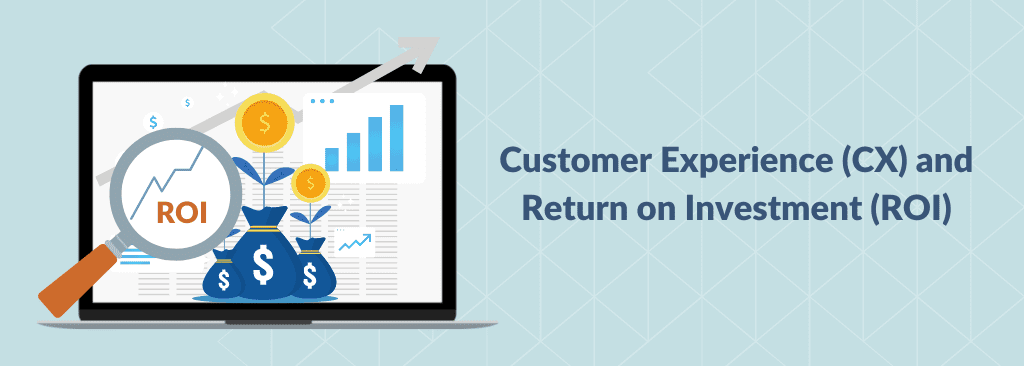Customer Experience (CX) and Return on Investment (ROI)
Unlike sales or marketing, customer experience initiatives are considered to be the softer components that are not directly linked to investment return.
When it comes to sales initiatives, you are looking at revenue growth. When you look at marketing initiatives, you look at the demand – converted into revenue. But, when it comes to CX, there is no direct correlation to every line item you do.
According to Forrester, the three main areas of focus for CEOs are revenue growth, profit growth, and stock price. Any initiative that does not directly impact these focus areas is chopped down.
So, it makes sense to clearly link customer-focused initiatives to financial growth.
Let us look at some of these reported statistics.
- Businesses that prioritize customer experience grow their revenue 1.7 times faster than businesses that don’t
- Businesses that prioritize CX also grow their customer lifetime value by 2.3x on average
- 66% of businesses that prioritize CX see increased retention, and 60% see an increase in customer lifetime value
- Customer experience leaders see a 307% return on their stock performance. That’s 108 points higher than the S&P Index 500
Most importantly, businesses that prioritize customer experience actively invest in it. Forrester reports that these businesses have, on average, 12 budget lines dedicated to CX.
[Source: hubspot.com]
Look at some of these additional statistics.
- Customer-centric companies are 60% more profitable than companies that don’t focus on customers
- Brands with superior customer experience bring in 5.7 times more revenue than competitors that lag in customer experience
- 84% of companies that work to improve their customer experience report an increase in their revenue
[Source: Forbes.com]
We can clearly see that there is an uptick in investing in CX.
How Do You Go About Convincing Your Senior Management About It?
You cannot go and ask for loads of dollars to be invested in CX without having a reason or a strategy.
How do you evolve the strategy?
Let Us Look at Two Critical Metrics – Customer Lifetime Value and Churn Rates With an Example.
Take a company that services 100 customers. They add ten customers every month, and 20 customers leave them every month. On average, we are looking at a lower customer lifetime value, and the churn rate is higher than the acquisition rate.
The common saying is that it takes more to get a new customer than to retain the existing ones.
Why Are the Existing Customers Leaving?
Most likely, it is a service issue. But do we know what it is?
That brings us to the next step.
Collect feedback from the customers who have churned and use that as a benchmark.
Let us say that you get to understand that the usability of your system is an issue. Reaching out for help takes more time than they imagined. They’d prefer self-service capabilities instead of conversing with an agent for their queries.
Now, We Know We Have Three Experience Issues – Usability, Support, and Additional Channel.
This is an obvious case for increasing the CX investments. This would directly impact the customer lifetime value (CLV) and reduce the churn.
Now, we have an investment, and its impact can be measured. We know what needs to be looked at, which is reason enough for you to enhance your CX program.
Look at the Benefit of Retaining Customers
Let us say that the new CX initiatives help reduce the churn by 50%, which means we are retaining ten customers of the 20 that are getting churned.
What Does This Mean to the Revenue?
Earlier, 10% of the revenues contributed by these ten customers were going to competitors, which is retained now. That means a clear ROI on the investment.
Overall, I have assumed that the cost of providing the CX efforts is lower than its revenue impact.
The cost components include – team costs, infrastructure costs & overheads.
Metrics to Measure
For the investments to continue making sense, you will have to monitor the following metrics constantly:
- Customer lifetime value
- Churn rate
- Cost of support
- The average revenue per customer
Most organizations have upped their CX budgets and the number of line items. Still, as a business, it would make sense only if it directly impacts the bottom line and top line.
Once you measure the metrics listed above, you should contextually compare them with the customer feedback to see if your customer experience program makes sense.
